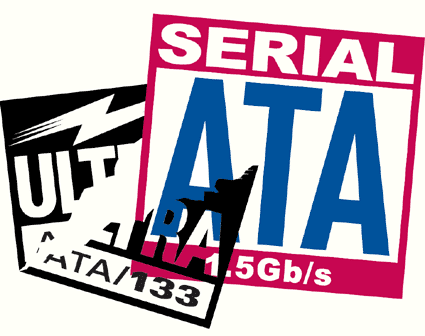SATA Hard Drives Run Riot: Maxtor, Hitachi, Western Digital 250 GB
Serial ATA Vs. UltraATA

The increasing availability of drives featuring Serial ATA interfaces highlights its by now considerably greater significance; after all, UltraATA will be replaced sooner or later. The cables are often too short and impractical and air circulation is too often in the way. When installing a drive, close attention must be paid to the configuration (keyword master/slave) and, at 100 MB/s (UltraATA/100), the interface's maximum bandwidth is gradually approaching a region that subsequent generations of drives will soon achieve.
Up to now the interface has not caused any bottlenecks in terms of performance, as ATA hard drives barely reach bandwidths of 70 MB/s. So as far as overall performance is concerned, switching to SATA does not represent any progress, even if the interface is being hawked in an ad-savvy way with "150 MB/s".
Of real significance, however, are additional features like hot plugging (plugging in and removing drives while in operating mode) and command queuing, which is being implemented with Serial ATA II. This lays the foundation for taking market share away from SCSI in the mid-range price segment. All of the major manufacturers already have respective drives on the market for the business sector (Maxtor MaXLine, WD Raptor) or are preparing equivalent products.
Stay on the Cutting Edge
Join the experts who read Tom's Hardware for the inside track on enthusiast PC tech news — and have for over 25 years. We'll send breaking news and in-depth reviews of CPUs, GPUs, AI, maker hardware and more straight to your inbox.
Current page: Serial ATA Vs. UltraATA
Prev Page SATA Breakthrough: 250 GB Models From Hitachi, Maxtor And WD Next Page Hooked Up: Both Connectors AvailableMost Popular

